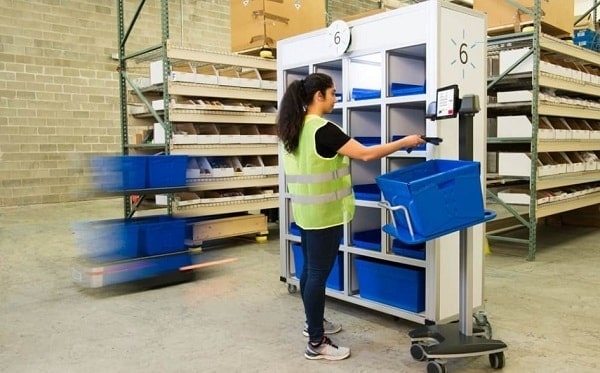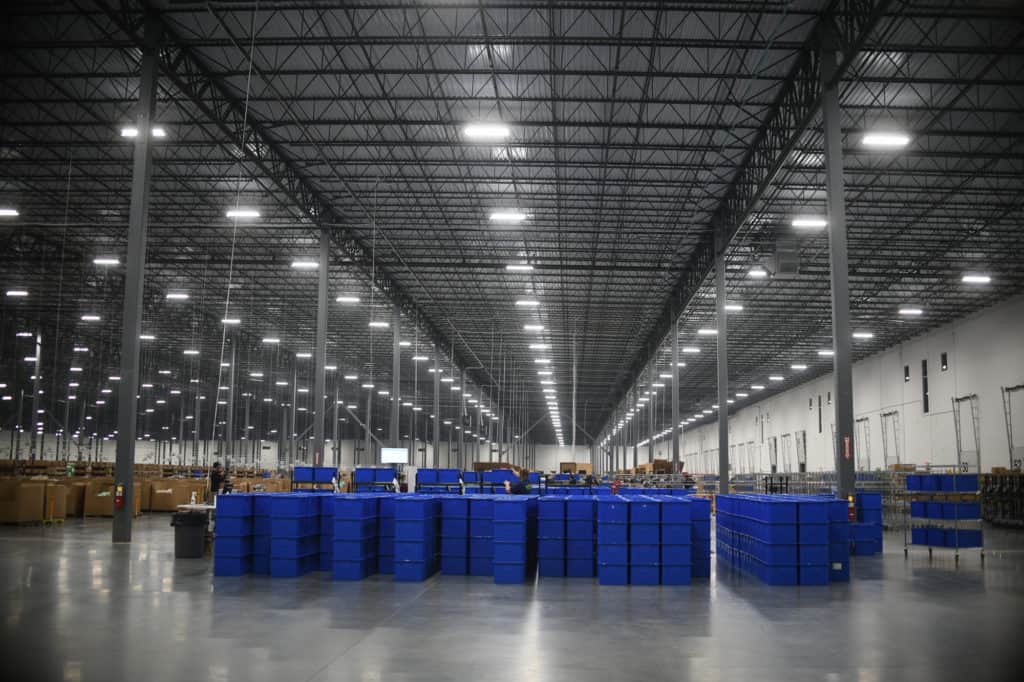Warehouse automation is reaching the tipping point, accelerated in part due to the global COVID-19 pandemic. The shift of commerce from brick and mortar stores to e-commerce platforms has created an unprecedented demand for warehousing. In addition, rising wages for warehouse workers driven by a pre-COVID shortage in skilled labor is exerting pressure on warehouse operations. Different factors are accelerating the adoption of new innovative technology in warehouses. There are also new technologies that are being developed for use in warehouses. Let us get to know some of the innovative warehouse technologies available to scale businesses.
1. Collaborative mobile robots
Collaborative mobile robots are smart automation solutions designed to augment the work of humans. Studies have found out that collaborative effort between human and robot enhances productivity by 85% compared to robots or humans alone. The advantages of collaborative robots include ease of implementation and easy integration into existing warehouse layouts, requiring no costly or time-consuming warehouse infrastructure updates. Collaborative robots also offer lower and more flexible costs, thanks to the ability to rent additional units to accommodate demand spikes and return them when demand returns to baseline.
2. Electronic data interchange (EDI)
EDI is the concept of regular data transfer and synchronization between business partners and different verticals within a company. EDI helps to scale automation by automating transactions that happen regularly or according to rules or patterns. It helps to reduce mistakes and errors in transactions and eliminates the need for data validation.
These benefits help reduce the cost of doing business, increase the speed of processing and support omnichannel commerce. As a simple example of EDI in action, a factory can automatically decide to increase or decrease the rate of production according to the current stock levels in warehouses.
3. Mobile sort solutions

Sortation is a recurring and essential function in warehouses and distribution centers. Mobile sort solutions help increase productivity and reduce the errors often associated with manual sortation processes.
Mobile sort solutions work well with other innovative warehouse technologies like collaborative mobile robots. Collaborative robots guide associates through tasks, directing associates to pick batches into totes within a picking zone. After all items for a batch are collected, the collaborative robot transports batched totes to a Mobile Sort station at the take-off point, where associates sort items from totes into discrete orders. With an intuitive interface, 6 River Systems’ Mobile Sort solution uses lights, images and sensors to direct associates to the correct bins and alert them to incorrect puts, increasing speed and accuracy.
4. Automated picking solutions
Manual order picking is inefficient and is prone to error rates of 1% to 3%. These errors cause a delay in operations and an increase in returns from customers. Automated picking solutions eliminate such errors and help to streamline warehouse operations.
Automated picking makes use of robotic or semi-robotic technologies to enhance the work of human associates. Automated picking helps to reduce the walking time for warehouse order pickers and shorten picking routes. These solutions integrate well with warehouse management systems (WMS) and help improve picking and packing accuracy. Such solutions also reduce the fatigue experienced by warehouse employees, are easy to learn and help to reduce employee churn.
5. RFID
RFID stands for Radio-frequency Identification, which uses electromagnetic waves to track objects in real-time. RFID technology has been prevalent in many industries for a long time and is recently increasing in prominence in supply chain applications. An RFID tag is attached to a product or case and can be monitored through the entire product or case lifecycle from a central database with the help of electromagnetic signals.
The advantages of using RFID over other identification techniques such as barcodes are that there is no requirement for a scanner, and it doesn’t require proximity or line of sight to the object. This helps to monitor the position and movement of inventory in the warehouse from a central location. It also helps to improve the accuracy of operations, especially when coupled with other automated solutions such as automated picking and sorting.
6. Drones
Drones are futuristic devices that were once prominent only in science fiction. Today, drones are being used in a variety of applications, and the technology is finding its way to warehouses, too. In warehouse operations, drones are experimental and have shown significant potential for improving warehouse operations.
Drones can be used to manage inventory and, less frequently, to pick some types of products in a warehouse. They can be used in existing warehouses without significant modifications and thus help to reduce the capital costs required to implement new technology.
7. On-demand warehousing
The sharing economy has become mainstream among consumers with the advent of Uber, Doordash and other similar businesses. A similar idea in fulfillment is on-demand warehousing. The concept helps companies in need of storage capacity identify parties that have vacant warehouse space. Businesses with warehousing needs can find a cost-effective solution without the need to acquire or expand a warehouse facility. It’s a win-win for both parties involved.
Technology is rapidly changing how warehouses operate. Implementing proven technologies and new innovations helps warehouse operations improve cost-efficiency, accuracy and flexibility at the same time. Learn more about how technologies like collaborative mobile robots can give your operation the flexibility to meet increased demand and reduce costs by downloading our white paper, The Business Case for Collaborative Mobile Robotics.


